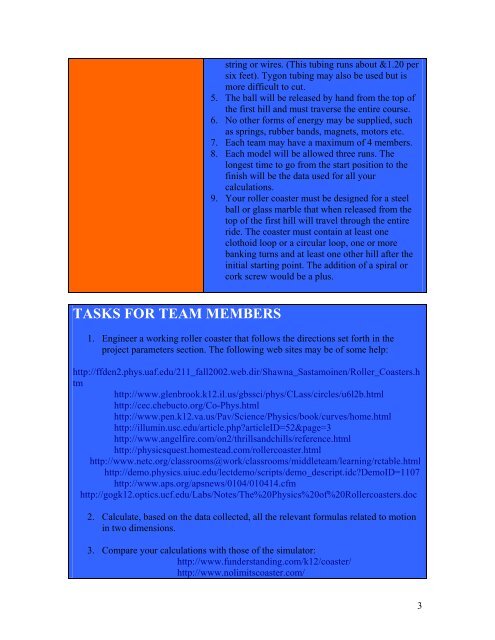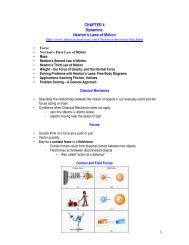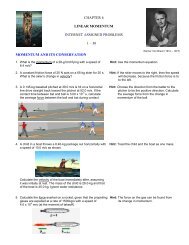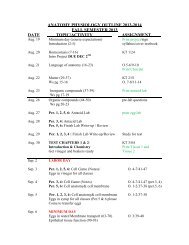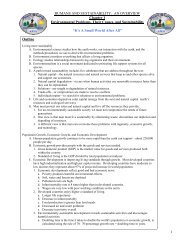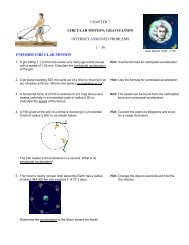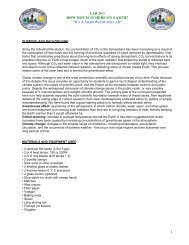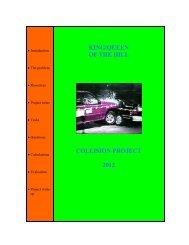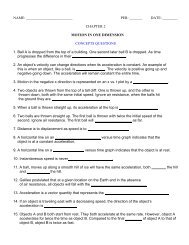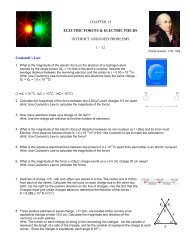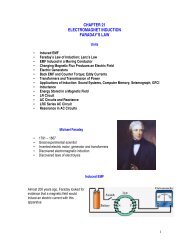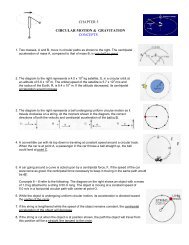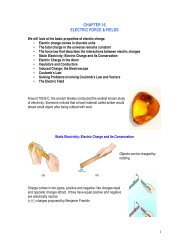Roller Coaster - Physics-matters.net
Roller Coaster - Physics-matters.net
Roller Coaster - Physics-matters.net
You also want an ePaper? Increase the reach of your titles
YUMPU automatically turns print PDFs into web optimized ePapers that Google loves.
string or wires. (This tubing runs about &1.20 per<br />
six feet). Tygon tubing may also be used but is<br />
more difficult to cut.<br />
5. The ball will be released by hand from the top of<br />
the first hill and must traverse the entire course.<br />
6. No other forms of energy may be supplied, such<br />
as springs, rubber bands, mag<strong>net</strong>s, motors etc.<br />
7. Each team may have a maximum of 4 members.<br />
8. Each model will be allowed three runs. The<br />
longest time to go from the start position to the<br />
finish will be the data used for all your<br />
calculations.<br />
9. Your roller coaster must be designed for a steel<br />
ball or glass marble that when released from the<br />
top of the first hill will travel through the entire<br />
ride. The coaster must contain at least one<br />
clothoid loop or a circular loop, one or more<br />
banking turns and at least one other hill after the<br />
initial starting point. The addition of a spiral or<br />
cork screw would be a plus.<br />
TASKS FOR TEAM MEMBERS<br />
1. Engineer a working roller coaster that follows the directions set forth in the<br />
project parameters section. The following web sites may be of some help:<br />
http://ffden2.phys.uaf.edu/211_fall2002.web.dir/Shawna_Sastamoinen/<strong>Roller</strong>_<strong>Coaster</strong>s.h<br />
tm<br />
http://www.glenbrook.k12.il.us/gbssci/phys/CLass/circles/u6l2b.html<br />
http://cec.chebucto.org/Co-Phys.html<br />
http://www.pen.k12.va.us/Pav/Science/<strong>Physics</strong>/book/curves/home.html<br />
http://illumin.usc.edu/article.phparticleID=52&page=3<br />
http://www.angelfire.com/on2/thrillsandchills/reference.html<br />
http://physicsquest.homestead.com/rollercoaster.html<br />
http://www.<strong>net</strong>c.org/classrooms@work/classrooms/middleteam/learning/rctable.html<br />
http://demo.physics.uiuc.edu/lectdemo/scripts/demo_descript.idcDemoID=1107<br />
http://www.aps.org/apsnews/0104/010414.cfm<br />
http://gogk12.optics.ucf.edu/Labs/Notes/The%20<strong>Physics</strong>%20of%20<strong>Roller</strong>coasters.doc<br />
2. Calculate, based on the data collected, all the relevant formulas related to motion<br />
in two dimensions.<br />
3. Compare your calculations with those of the simulator:<br />
http://www.funderstanding.com/k12/coaster/<br />
http://www.nolimitscoaster.com/<br />
3


